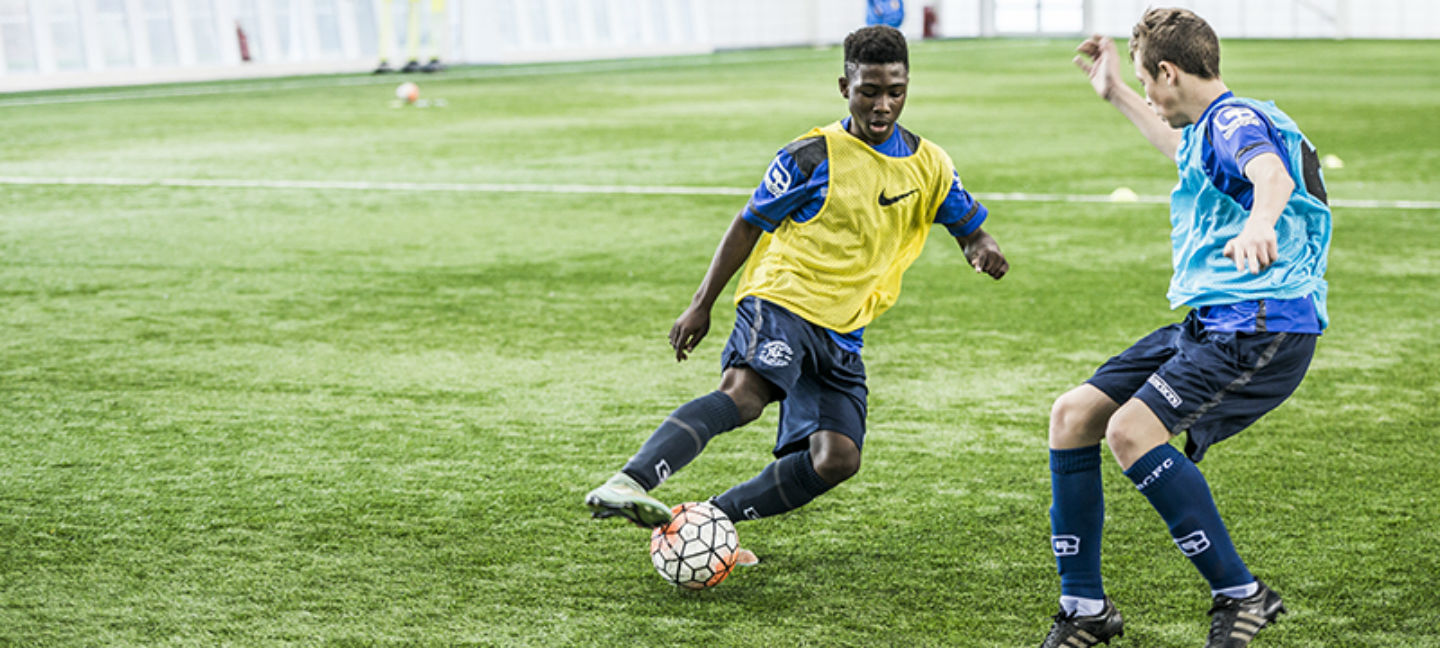Effective practice design

What does an effective 1v1 practice look like?
- Geoff Noonan
- 31 March 2017
How realistic are your 1v1 coaching practices? Geoff Noonan, FA youth coach educator, discusses the need to make sessions relevant to the game.
Black Box Thinking – a new book by Times’ columnist, Mathew Syed – highlights the importance of sharing knowledge and common mistakes across industry. The purpose: to avoid repeat errors in the future.
It's a theme which is relevant in my role as an FA youth coach educator, where I quite often see the same ineffective coaching practice designs repeated at different professional youth academies.
The internet may be one of the reasons for this. A huge volume of coaching content is now available online and practice sessions are easily shared. However, if sessions are simply consumed and copied without any critical review, how is this content ever challenged so it can be tailored and improved?
One of the common issues encountered is 1v1 practice design. Think about your favourite 1v1 practice session– what would it look like? The most common answer I receive is: two players facing each other across a gap [see image one, below].

Normally the practice starts in one of two ways: the attacking player starts with the ball at their feet and dribbles to attack their opponent or they receive a pass from the other side of the square.
Obviously, this type of practice only deals with the ‘frontal’ aspect of a 1 v 1 scenario - where the player is faced up by a defender.
Interestingly, many 1v1 situations begin with a player receiving the ball with their back to goal [see image two, below] – as has been discussed recently by a number of coaches. What impact should this have on practice design?

In addition, there is another fundamental element of the 1v1 that is rarely included, but is vital to the game of football.
Football skills are often broken down into the ‘before, during, and after’ parts of an action. Yet, many practices simply focus on the ‘during’ part of skill execution. In the case of 1v1, this would involve the player on the ball doing turns or dribbling moves.
However, if the aim is to create game-realistic practices, as coaches we must consider what a player must do to earn the right to be in a 1v1 situation facing their opponent?
In my experience, most 1v1 practices ignore the ‘before’ part of the skill which involves all the actions required before receiving. This may include multiple movements, repeated scanning for space and/or opponents, and different decisions based on whether you are receiving the ball in space or marked by an opponent.
By simply allowing the players to face an opponent with the ball at their feet we may be reinforcing the message that skill is only done on the ball. Instead, it is crucial to encourage players to understand that pre-movements and clever off the ball movement are equally as important. If we don’t, we are probably doing the players a disservice as they will struggle to get on the ball during a game.
It is an issue that I discussed with Seb Tidey, academy coach at Gillingham FC, as part of the in-situ coach development work provided for academy clubs. Over the course of a number of weeks we worked together to discuss, reflect and adapt some 1v1 practice designs with a particular focus on the ‘before, during and after’ involved in 1v1 situations.
The result of the discussion can be seen in Seb’s practice design [see image three, below] which includes a front-screen player providing a challenge to the attacking players to move to get on the ball. Including a goal also improves the motivation for the attacking players. Likewise for the defender who is challenged to protect the goal.

The practice works with the serving player challenged to move across the line to play an angled ball into the attacking zone. With a front screen player attempting to block the pass the attacker is challenged to move into space before receiving. The front screen player can also be freed up to become a recovering defender once the ball has been played into the attacking zone and resultantly puts a time constraint on the attacker.
Additionally, the server can also join in to create a 2v2, a practice that helps the attacker to look up and see where their teammates are.























